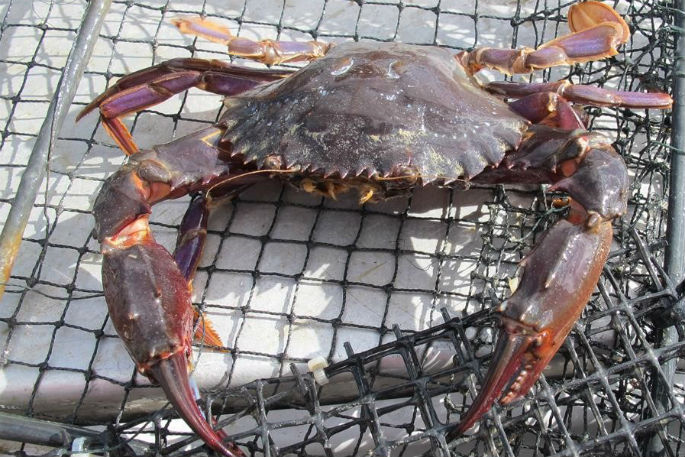An invasive pest, the Asian paddle crab (Charybdis Japonica) has been discovered in Tauranga Harbour.
Regarded as an invasive pest that is bigger and more aggressive than the native counterpart that already lives in Tauranga harbour, Asian paddle crabs are well established in the Hauraki Gulf and Northland.
This is the first time they have been found in the Bay of Plenty. A mature male and female pair were caught in the same pot near the Matapihi Bridge in Tauranga harbour in a summer marine pest survey conducted by MPI.
The Bay of Plenty Regional Council has been notified and will lead the response. Biosecurity officer Hamish Lass says they're not sure how they got here but the discovery is devastating.
'We're not 100 per cent sure but it's most likely that larvae floated here or hitched a ride on a fouled hull or in ballast water from another part of the country,” says Hamish. 'It's also possible they naturally migrated here as they are very capable swimmers”.
Charybdis Japonica is an extremely aggressive crab and an added threat to an already vulnerable ecosystem.
'These crabs are extremely invasive. Not only do they compete with our native crabs but they also feed on shell fish such as pipi, tua tua and cockles.”
A response team lead by the Regional Council and University of Waikato is investigating the level of infestation in Tauranga Harbour and will also setting up surveillance in the Maketu Estuary and Ōhiwa harbour.
'Surveillance will help us determine the extent of incursion and what, if anything, we can do. If it shows they have established, they will be very difficult to contain as current control methods are limited in their effectiveness,” says Hamish.
The regional council wants people to keep an eye out for Asian paddle crabs and reminds people it is illegal to move living pest crabs. They encourage people to kill them if they find any and report it to The Bay of Plenty Regional Council on 0800 STOP PESTS (0800 786 773)
What they look like:
Large swimming crab (up to 12cm across) with six distinct spikes on each side of the carapace and five spines on each claw.
Where they hide:
In New Zealand they prefer to hide in estuaries where there is firm sand or muddy fine sand up to depths of 15m.
Why they're a problem:
Extremely aggressive and have the potential to compete with native crabs for space and food. They also prey on native species such as shellfish, fish and other crustaceans. Rapid growth and reproduction rates mean they can establish themselves quickly.
They are however said to be good eating.



5 comments
Nice one Border control..
Posted on 22-02-2018 15:01 | By Marshal
This shouldn't be to much trouble to fix.. Issue some quota to commercial interests, should see them all gone in a few years.. At least it proves there is still some marine life in the Tauranga harbour.. Yay..
Marshal
Posted on 22-02-2018 15:23 | By NZer
Its always easy to have a whinge about someone else ah.... ask any scuba diver, there is plenty of life in the harbour.
It was only a matter of time...
Posted on 22-02-2018 17:36 | By Border Patrol
...with the vessels which come and go into our port, let alone the recreational boats coming from already infested areas, with the only safeguard being that we are reliant on those same boat owners making sure they have anti fouled their boats, or cleaned their hulls. The problem we now have in this country is that we rely on people "doing the right thing" and to "take responsibility," however, we have reached the stage where this is no longer enough, and tougher actions and policing are needed, but don't hold your breath.
Question
Posted on 22-02-2018 19:38 | By Tgaboy
Does anything good ever arrive on our shores from Asia?
Actually
Posted on 22-02-2018 20:50 | By CC8
Quota is determined by legislation and commercial fishermen are mostly very concientious about sticking to it. The real rort is the big fishery companies which have used Waitangi Treaty payouts to buy up all the quota...and now EXPORT most of the fish caught. As far as these crab are concerned....Just let the human imports from the same place as the crabs know that they are there, they will be eliminated in no time flat. Ask the people who live in Cockle Bay near Auckland . Actually more aptly named Cockleless bay these days.
Leave a Comment
You must be logged in to make a comment.